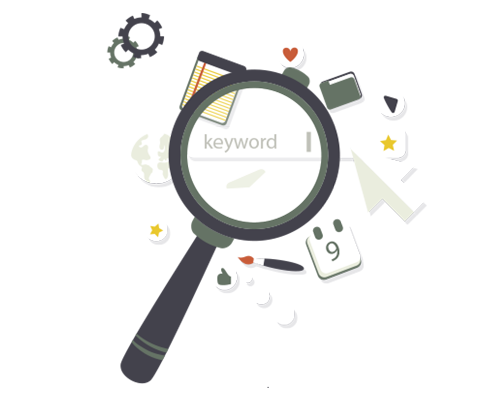Integrating PPC with SEO for Optimal Results
SEO and PPC are often seen as separate strategies, but the most successful digital marketing campaigns use both in harmony. PPC offers immediate visibility, while SEO builds long-term organic traffic. By integrating the two, businesses can dominate search results and maximize their marketing potential.
One way to leverage both strategies is by using PPC data to refine SEO efforts. Paid search campaigns reveal which keywords convert best, allowing you to focus on optimizing content for those terms organically. Additionally, PPC ads can target competitive keywords that may take months to rank for through SEO. When combined, PPC and SEO create a balanced approach that drives more qualified traffic, improves brand authority, and enhances overall digital marketing performance.

Comprehensive PPC Management Services
Running a PPC campaign is more than just setting up ads—it requires continuous monitoring, strategic adjustments, and performance optimization. Our full-service PPC management ensures your campaigns are cost-effective and conversion-driven. We handle everything from account setup and keyword research to bid management and audience targeting.
Our approach involves more than just increasing traffic; we focus on bringing in the right audience that is ready to convert. We analyze user behavior, fine-tune ad placements, and optimize landing pages to ensure your budget is spent efficiently. Every campaign is backed by data, helping you make informed decisions that lead to better ROI.
Tailored PPC Strategies for Your Business
Every business is different, which is why a one-size-fits-all PPC approach doesn’t work. We develop custom PPC strategies tailored to your industry, target audience, and business goals. Our team ensures that each campaign is designed to deliver the best results for your specific needs.
We work with a variety of industries, including:
- E-Commerce: Shopping ads, dynamic remarketing, and performance-driven Google Ads campaigns.
- Service-Based Businesses: Local PPC strategies to generate leads and increase phone calls.
- B2B Marketing: LinkedIn Ads, Google Search Ads, and lead generation campaigns tailored for professionals.
- Franchise & Multi-Location Businesses: Localized ad campaigns targeting multiple geographic areas.
By understanding your market, competition, and customer behavior, we create highly targeted campaigns that drive conversions and revenue.

Maximizing ROI with Expert PPC Management
A successful PPC campaign isn’t just about driving traffic—it’s about making sure every dollar spent delivers a strong return on investment. Our team continuously optimizes ad placements, bid strategies, and audience segmentation to ensure that your campaigns remain profitable.
By analyzing real-time data, we adjust bids dynamically to focus on high-performing keywords and audience segments. If an ad isn’t converting well, we refine the messaging or shift the budget to more effective placements. Our proactive management approach means your campaigns stay competitive and cost-efficient, delivering the highest possible ROI.

Data-Driven Approach to PPC Campaigns
We believe in a data-driven approach to PPC management, ensuring that all decisions are backed by insights and performance analytics. We continuously monitor campaign data, making adjustments to improve efficiency and effectiveness.
Our data-driven process includes:
- Conversion Tracking: Measuring the effectiveness of each ad to ensure it leads to valuable actions.
- A/B Testing: Testing different headlines, descriptions, and visuals to find the best-performing ads.
- Audience Insights: Analyzing user behavior to refine targeting and messaging.
- Performance Reporting: Providing detailed reports with key metrics and actionable insights.
By leveraging real-time data, we make proactive adjustments to enhance campaign performance and maximize results.
FAQs
Why Choose Us for Your PPC Campaigns
With so many PPC agencies out there, finding the right one can be a challenge. We stand out by offering a results-driven approach that prioritizes transparency, strategy, and continuous optimization. Unlike agencies that take a “set it and forget it” approach, we actively manage your campaigns, making data-backed adjustments to improve performance.
Our team consists of certified PPC experts who stay ahead of industry trends and algorithm changes. We provide clear, detailed reporting so you always know where your budget is going and how your campaigns are performing. Whether you’re looking to increase leads, grow e-commerce sales, or improve brand awareness, our expertise ensures that you achieve the best possible results.
Ready to take your PPC campaigns to the next level? Let’s create a strategy that drives measurable growth for your business.
How long does it take to see results from a PPC campaign?
PPC campaigns can deliver results almost immediately after they go live. Unlike SEO, which takes time to build organic rankings, PPC ads start driving traffic as soon as they are approved. However, optimizing a campaign for maximum ROI takes time. Within the first few weeks, we gather data on keyword performance, audience behavior, and ad engagement. From there, we refine bidding strategies, ad copy, and targeting to improve conversions. Most businesses see significant improvements within the first 30 to 90 days of an optimized PPC campaign.
How much should I budget for a PPC campaign?
PPC budgets vary depending on industry, competition, and campaign goals. Businesses in highly competitive industries (such as legal, finance, and healthcare) may require a higher budget due to higher cost-per-click (CPC) rates. A good starting point is determining your customer acquisition cost and lifetime value—this helps set a realistic budget that aligns with your revenue goals. We work with businesses to develop a budget that maximizes ad spend efficiency, ensuring every dollar is used to generate the best possible return on investment.
